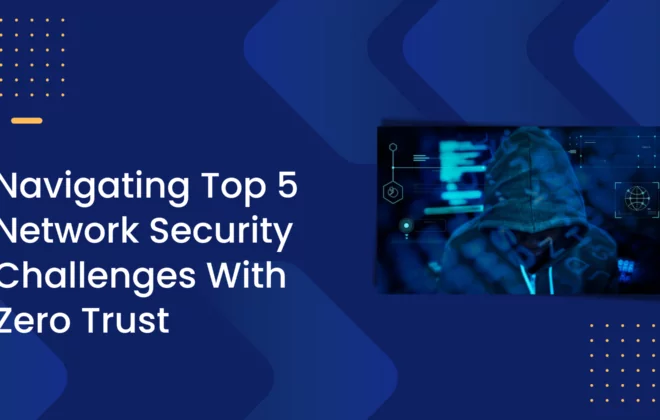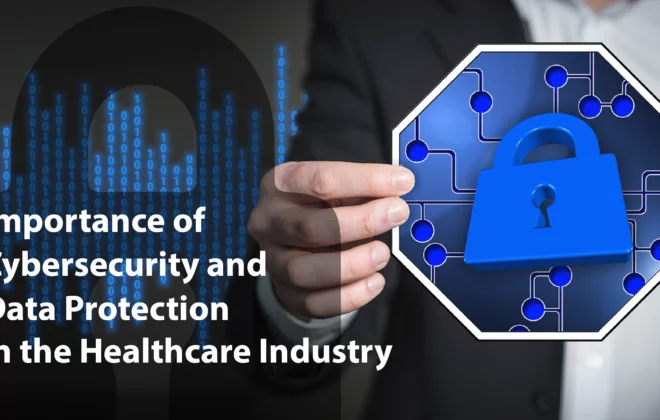How Businesses Can Secure Their Business from Cyber-Attacks?
As businesses increasingly depend on technology to operate, the risk of cyber-attacks continues to grow. Cyber-attacks can be detrimental to a company’s reputation and can result in lost business and profits. Therefore, it’s crucial to take proactive measures to protect your business from cybercrime. In this blog post, we will explore twelve ways on how to protect your business from cyber-crime.
Ways to protect your business from a cyber attack
1. Back Up Your Data
To safeguard your business’s data and website, a reliable backup system is crucial. It can prevent significant losses of sensitive information and money in case of a cyber-attack or computer issue. Consider daily incremental backups to portable devices or cloud storage, end-of-week server backups, quarterly and yearly server backups. Test data restoration regularly and store backups offsite. You can also opt for cloud storage with encryption and multi-factor authentication. Backing up data is a cost-effective solution for its recovery in case of any unforeseen incident. Use multiple backup methods and regular testing to protect your business from potential data loss.
2. Manage Passphrases
It is true that weak passwords can make it easier for hackers to gain access to sensitive information, which can lead to data breaches and other security risks. Using a passphrase that is long, complex, unpredictable, and unique can help reduce this risk by making it more difficult for attackers to crack or guess your password. Additionally, using a password manager can help you securely generate and store passphrases for all of your accounts, reducing the likelihood of using the same password for multiple accounts. It is also important to regularly update your passphrases and avoid sharing them with others.
3. Monitor Use of Computer Equipment and Systems
Businesses must be vigilant in monitoring their computer equipment and systems to detect any suspicious activity, including unauthorized access and security breaches. Cyber security for businesses involves reviewing logs and tracking user activity and ensuring that all software, firmware, and hardware are up-to-date with cybersecurity policies and the latest patches. Regular scans and tests should be conducted to identify vulnerabilities, and controls such as intrusion detection systems, firewalls, and access controls should be implemented to mitigate risks while minimizing operational disruptions.
4. Put Policies in Place to Guide Your Staff
Establishing clear cybersecurity policies and guidelines is essential for ensuring all employees adhere to best practices. Such policies should cover proper usage of company technology, handling of sensitive information, and reporting of security breaches. Clear policies help employees understand their responsibilities, ultimately enhancing the organization’s security and promoting a culture of security awareness. Additionally, well-defined policies can help the company comply with regulations and avoid legal and financial consequences related to security incidents. Effective communication and training of policies are essential to ensure all employees understand their roles in maintaining a secure environment.
5. Protect Your Customers
Securing customer data is a legal requirement and good business practice. Businesses must ensure that data is stored securely and accessible only to authorized personnel. Effective measures include encryption, two-factor authentication, and limiting data collection. Data breaches are increasingly common, and the consequences can be severe, resulting in reputation damage, legal action, and hefty fines. To protect customer data, companies must take proactive measures. Encryption is a powerful tool to safeguard sensitive information by converting it into a code that only authorized parties can decipher using a key. Hackers cannot read encrypted data without the key, even if they gain access to it.
6. Consider Cyber Security Insurance
Insurance policies can provide comprehensive coverage against various types of cyber risks such as data breaches, website hacks, and other cyberattacks. Cybersecurity insurance not only covers the direct costs incurred due to these breaches but also offers remediation services such as legal advice, PR management, and credit monitoring for customers if required. Additionally, it’s crucial for companies to perform regular security assessments that meet industry standards to qualify for coverage.
7.Get Updates on the Latest Risks
Organizations need to keep track of new attack methods, vulnerabilities, malware strains, and other emerging threats that could harm their networks. This involves regularly monitoring credible sources of information and subscribing to reputable newsletters or alerts that provide fresh insights on current cyber security issues. Being informed about the latest risks enables professionals to implement necessary preventive measures more effectively, such as patching systems promptly, backing up critical data regularly, enforcing strong passwords policies, training employees on safe online practices etc. By staying proactive in managing cyber security risks through timely updates and continuous learning of the ever-changing threat landscape, organizations can minimize losses from potential breaches and safeguard confidential information.
8. Get Cyber Security Advice
Providing cyber security for businesses can be a challenging task. However, consulting cybersecurity experts is critical for businesses to identify vulnerabilities and develop strong security strategies. Experts offer recommendations on security best practices and suggest ways to enhance existing security measures. They conduct a comprehensive analysis of the business’s network, systems, and applications to identify any weaknesses. They also provide guidance on implementing industry-standard security controls, such as firewalls, intrusion detection and prevention systems, and security information and event management solutions. By leveraging cybersecurity experts’ insights, businesses can ensure their sensitive data and assets remain secure, build customer trust and confidence, and minimize the risk of costly data breaches and cyber-attacks.
9. Patch Your Operating Systems & Software Regularly
Cybercriminals often exploit vulnerabilities in operating systems and software to gain unauthorized access to a business’s systems. Regularly patching and updating software and operating systems can help reduce the risk of cyber-attacks.
10. Secure All Wireless Access Points & Networks
Cybercriminals exploit software and operating system vulnerabilities to gain unauthorized access to a business’s sensitive information. Outdated software, unsecured network protocols, and weak authentication processes are common targets. Regularly patching and updating software and operating systems is essential to reduce the risk of cyber-attacks. This process involves identifying and addressing system weaknesses and implementing necessary security measures. It’s crucial to train employees to recognize and report security threats, such as suspicious emails or attachments.
11. Set up Web & Email Filters
Web and email filters are essential tools that can effectively block malicious content and prevent phishing attacks. By configuring these filters, you can easily block known malicious websites and filter out spam emails. This is particularly important in today’s digital age, where cyber threats are becoming increasingly sophisticated and frequent. With the right web and email filters in place, you can protect your personal and business data from cybercriminals and hackers.
12. Use Encryption for Sensitive Business Information
Encryption is an essential security measure for protecting confidential business information from unauthorized access. This technique can secure data both at rest, stored on a hard drive, and in transit, transmitted over the internet. Encryption converts plain text into a coded format that only authorized personnel with a specific key can decipher. This guarantees data remains unreadable and unusable, even if it falls into the wrong hands. In today’s digital age, encryption is critical for businesses as cyber threats are rampant, and data breaches are common. By implementing encryption protocols, businesses can secure their data and mitigate the risk of data breaches.
Conclusion
In conclusion, protecting your business from cyber-attacks requires a proactive approach that includes implementing security best practices, staying informed about the latest risks, and seeking professional advice when necessary. By following the twelve tips outlined in this blog post, businesses can significantly reduce their risk of falling victim to cybercrime
Remember, cybersecurity is a continuous process, and it requires ongoing monitoring, testing, and updating to ensure that your systems and data remain secure against evolving threats.
Research, References & Resources
https://business.gov.au/online/cyber-security/protect-your-business-from-cyber-threats
https://www.mass.gov/service-details/protect-your-company-from-cyber-attacks
https://www.nist.gov/blogs/manufacturing-innovation-blog/how-protect-your-business-cyber-attacks
https://www.fintechnews.org/10-tips-on-how-to-prevent-cyber-attacks-on-businesses/
https://www.hg.org/legal-articles/cyber-security-testing-measures-for-your-small-business-51199




